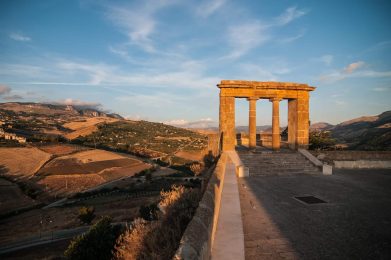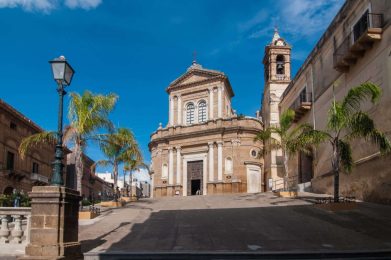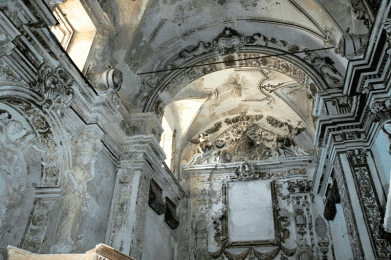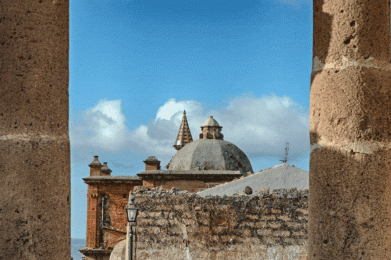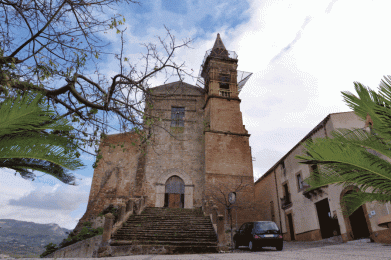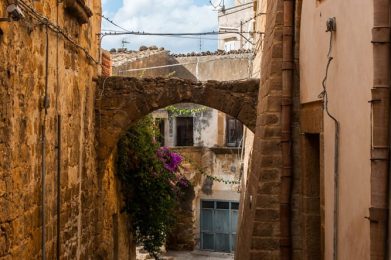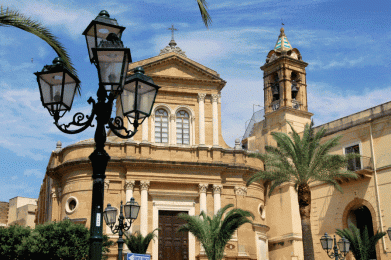Of Arab origin, this beautiful village still retains traces of this Islamic matrix in the Arab quarter. The area’s economy is mainly agricultural-pastoral. Important is the production of oil with the indigenous Oliva Nocellara del Belice (DOP). Wine, typically the Sambuca di Sicilia DOC, is the main resource of the local economy.
Immagini del borgo
Sammuca, in Sicilian, has Arab origins and, to distinguish it from its Tuscan namesake, took the additional name of Zabut in 1863 after the ancient castle so named by Emir Zabut; but in 1923 it assumed its present name. Perched on a hill, it is located in the Belice Valley at 350 metres above sea level. Today’s Sambuca was founded by the Arabs around 830; they called it Zabuth (to recall the Arab emir of the same name, Al-Zabut, who had a castle erected there) and built it on the slopes of Mount Genuardo, between the Belice and Sosio rivers. To the north, the castle is protected by crenellated walls, and to the south, the adjoining Casale winds its way through the Arab quarter.
.
Sambuca still retains traces of its Islamic matrix in the ”Arab quarter”, built by an urban layout that developed around seven ”Saracen alleys” (li setti vaneddi), transformed into a living museum of Arab-Sicilian history, and in the fortress of Mazzallakkar on the shores of Lake Arancio, which is submerged every time the lake level rises. Many styles have intertwined and of many epochs Sambuca è bears witness and preserves the signs. On Mount Adranone stands the archaeological complex dating from the 4th century B.C. and the ancient Arab farmhouse in the resort area. Baroque façades and 19th-century palaces mingle with a historical centre of Arab origin whose most vivid expressions are li setti vaneddi (seven Saracen alleys), the Matrice church and the Belvedere terrace, remains of the ancient Emir’s castle. Also important are the 17th-century Palazzo Panitteri (near the Ethno-Anthropological Museum), the Palazzo dell’Arpa (seat of the Town Hall) and the Palazzo Ciaccio, the Church of the Carmine with its marble statue of the Gaginian school of the Madonna dell’Udienza, Patron Saint of Sambuca di Sicilia, and the Church of San Michele Arcangelo with its wooden equestrian ferculum of St George piercing the dragon. Signs of a population attentive to culture are the L’Idea municipal theatre and the Gianbecchina Institution. Outside the town centre, there are the ancient towers of Pandolfina and Cellaro and the Mazzallakkar fortress, whose towers emerge only in the summer months when the level of Lake Arancio drops.
The economy of the area is mainly agricultural and pastoral. Important is the production of oil with the indigenous Oliva Nocellara del Belice (DOP). Wine, typically Sambuca di Sicilia DOC, is the main resource of the local economy. It is produced in numerous wine cellars and exported throughout Italy, to vast areas of Europe, but also overseas and to Asia. There are also numerous sheep farms that contribute to the production of local dairy products, including Vastedda della Valle del Belice DOP. Also worth mentioning are the local pastries, famous for various sweets: Minna di virgini, a traditional food product, almond cakes, cucciddata, cassatedde.
Borgo di Sambuca di Sicilia
Commune of Sambuca di Sicilia
Province of Agrigento
Region of Sicily
Inhabitants: 5,877
Area: 96.37 square kilometres
Centre altitude: 350 m above sea level
the municipality is part of:
I Borghi più belli d’Italia
Città del vino
Strada del Vino Terre Sicane
Protected natural areas:
Natural Reserve Monte Genuardo, Santa Maria del Bosco
The Town Hall
Corso Umberto I 195 – Tel. 0925-940111
Patronal feast
Maria SS. of the Audience – Third Sunday in May
*** Translated with www.DeepL.com/Translator (free version) ***
IN AUTO
- Percorrendo l’autostrada le uscite più vicine al centro di Sambuca di Sicilia sono:
– Uscita S.Ninfa – Partanna (A29 Palermo-Mazara del Vallo)
– Uscita Castelvetrano (A29 Palermo-Mazara del Vallo)
IN TRENO
- Stazione di Castelvetrano
- Stazione di Mazara del Vallo
IN AEREO
- Aeroporto di Palermo
- .
- WEEKLY MARKET: every Wednesday, in the city centre;

